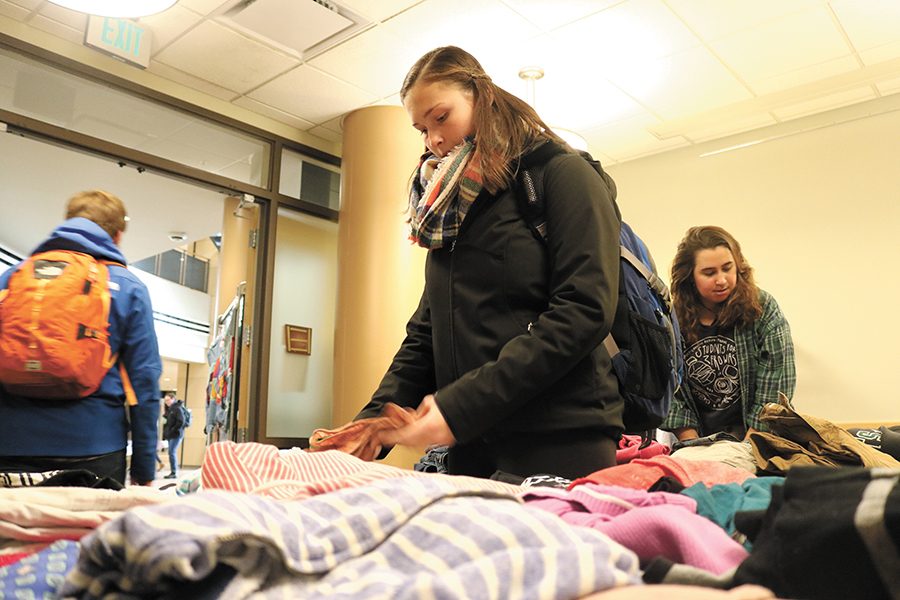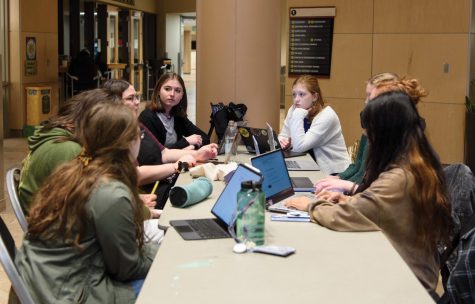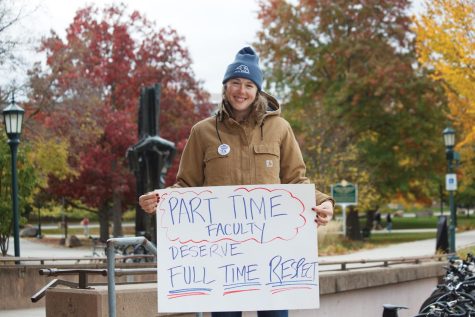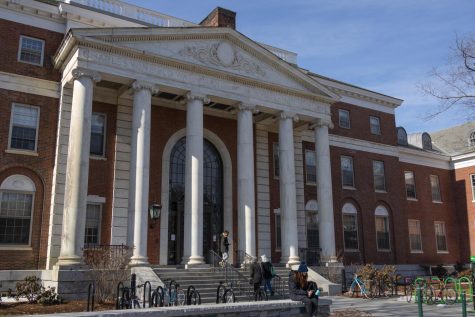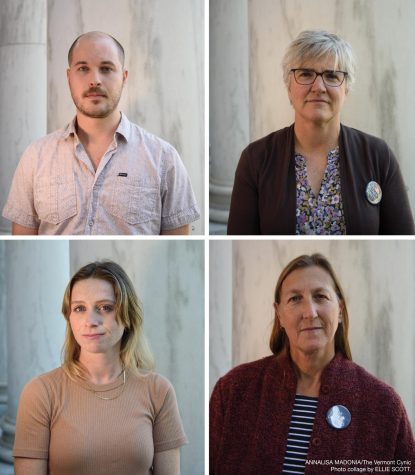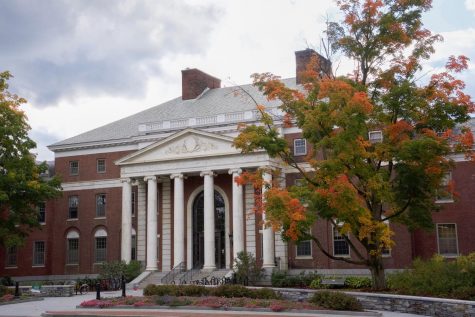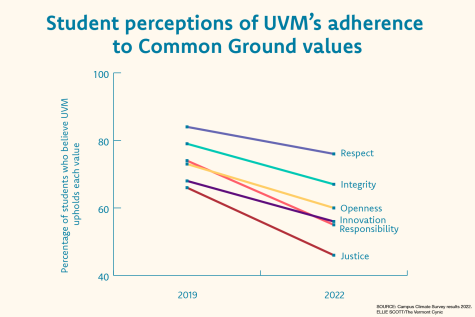SGA takes steps to end food insecurity
Sophomore Emilie Begin looks through shirts at the Vermont Student Environmental Program’s thrift shop initiative called Cat’s Closet, located in the Rosa Parks Room in the Davis Center.
November 27, 2018
To help fix food insecurity at UVM, a food pantry and meal swipe bank program will soon come to campus.
Two surveys given to the UVM community found that 17 to 25 percent of undergraduate students at UVM don’t have access to enough food.
SGA President Ethan Foley, a junior, has been working on a food pantry and thrift shop for undergraduate students, which he plans to name Rally Cat’s Closet and Cafe.
The UVM food insecurity working group is looking to create a bank of extra meal swipes that can be passed along to other students.
“The surveys were done to better understand the problem,” said Assistant Professor Meredith Niles, co-chair of the working group. “I’m wanting to really understand what was going on at UVM.”
The working group has given some resources to help the pantry project, but has focused on their meal swipe plan, said Nicole Rohrig, a UVM dietician and the other co-chair of the working group.
“What the working group really decided to tackle this semester was getting the Swipe Out Hunger program up and running,” Rohrig said.
Swipe Out Hunger is a national program that collects extra meal swipes into a bank that students who are in need can draw from, Rohrig said.
Sophomore Clare Abbatiello said that she’s concerned about living off campus because of rising living costs in Burlington.
“It’ll be hard. The prices are really high here,” she said. “I have a friend who lives off campus and he told me sometimes he only eats popcorn.”
Junior Emily Downs sometimes has a hard time eating due to her schedule and how expensive living off campus in Burlington is, she said.
The results of the first survey concerned Foley, who felt like he really needed to do something to address this student issue, he said.
A second survey was administered to find more specific information about the groups most impacted by food insecurity in the UVM community, Rohrig said.
“At UVM specifically, a survey went out last year in 2017 that says that over 25 percent of undergraduate students who are not on a meal plan have experienced food insecurity,” Foley said.”
The name of the project incorporates the Vermont Student Environmental Program’s current thrift shop initiative, called Cat’s Closet, and works to break the stigma around food pantries, Foley said.
“We’re not going to be formally referring to it as a ‘food pantry because we’re trying to destigmatize the process of going to a food pantry as a college student,” Foley said. “We want to make sure that all the students who actually need to utilize the project are able to and feel comfortable doing so.”
VSTEP is excited to work with SGA on this project and hopes it will help with food insecurity, VSTEP President Abby Fuirst, a junior, said.
“I’m excited about having a shared space somewhere on campus,” she said. “I’m hoping that it’ll help with food insecurity, that people feel more comfortable getting food if they need it.”


